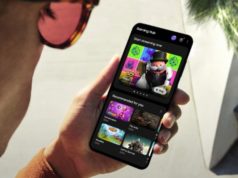GreenPal CEO Bryan Clayton came to realize he had to scrap his company’s $90,000 website. The business aims to link homeowners with lawn care companies, but its software wasn’t equipped to easily handle requests from mobile users, and 85 percent of visitors using those devices left without a transaction.
“We knew we had to completely gut the entire experience and build it from a mobile-first perspective,” Clayton says.
More small business owners are recognizing that however they’ve reached customers in the past, mobile not only needs to be part of their strategy but may need to be the primary focus of their marketing. Research showing phones and tablets edging out other means is helping persuade them. And some are operating only with apps on mobile devices, forgoing websites.
When GreenPal was launched in 2012, the site was set up for traditional computers. “It was almost a different world,” Clayton says. A year later, GreenPal realized it had to change. Now, 95 percent of customer interactions come from mobile devices. Customers get bids from lawn care providers, make appointments and can pay using GreenPal’s mobile site or app.
“You don’t walk into the other room and sit down at your computer. You just do it on your smartphone,” says Clayton, whose company operates in metropolitan areas including Atlanta and Decatur, Georgia; St. Louis; Nashville, Tennessee; Charlotte, North Carolina; and Tampa and St. Petersburg, Florida.
More than half of Google searches, which number in the trillions, take place on smartphones and tablets, and more than half the visits to websites that use Google analytic services come from mobile devices. What’s known as responsive design has made it easier for companies to fashion sites that work for smartphones, tablets and traditional computers, taking pictures, text and links and reconfiguring them for the particular type of screen.
As consumers rely more heavily on mobile, especially younger people whose phones are never far away, experts say that strategy needs to be the priority.
“Investment in growth really should be focused on the mobile market,” says Gene Alvarez, an analyst with technology research company Gartner.
Giftagram, which allows shoppers to buy and send gifts, can only be accessed through its app. People who visit the company’s website from a computer can download the app to their phone or tablet, which is the only way to browse or order.
As a startup with limited resources, Giftagram decided to put its money where the growth was, says Jason Reid, CEO of the Toronto-based company. Another reason: An app makes it easy to choose a gift and have a notification sent to a recipient via email or text.
“The simplicity of what we’re able to do in mobile can’t be replicated in a desktop,” Reid says.
A mobile-first strategy also makes it easier for companies to cater to specific groups. At Greek Gear, which sells clothing, tote bags and other items with fraternity and sorority logos, half the online visitors use mobile devices, CEO Joe Tantillo says.
Many of them are college students who don’t want to spend time browsing all the merchandise, he said, and the items featured on smartphones or tablets are the top sellers. “They can just pick a size and go,” Tantillo says.
GreekGear, founded in 1999, began its mobile-first strategy about four years ago because of the increasing number of visits to its website from mobile devices. About a third of the mobile visits result in sales. Tantillo expects that number to rise as each class of college students is more likely to shop with their phones.
“Because they’re coming to us this way, it needs to be a priority,” he says.
Bear Mattress has seen sales from mobile devices increase since it was launched last year. About half now come from phones and tablets and CEO Scott Paladini expects that to grow because 85 percent of company’s online visitors are using mobile devices.
Although many consumers go to mattress or department stores to buy beds, “we realized there’s a growing need to see mattresses on the internet,” Paladini says.
One attraction is the ability to call the Hoboken, New Jersey-based company with one touch from the mobile site.
“It’s the best device to contact and be in touch with our customers,” Paladini says.
Manhattan-based Lighting New York began focusing on its mobile sites four years ago, and now gets as much as 40 percent of its online visits from mobile devices, says Aaron Covaleski, the company’s director of online search marketing. Although many shoppers don’t buy lighting fixtures from their phones, they use them for research, then switch to the computer, call or visit a store, he says.
“It’s great for getting people introduced to us,” Covaleski says.







